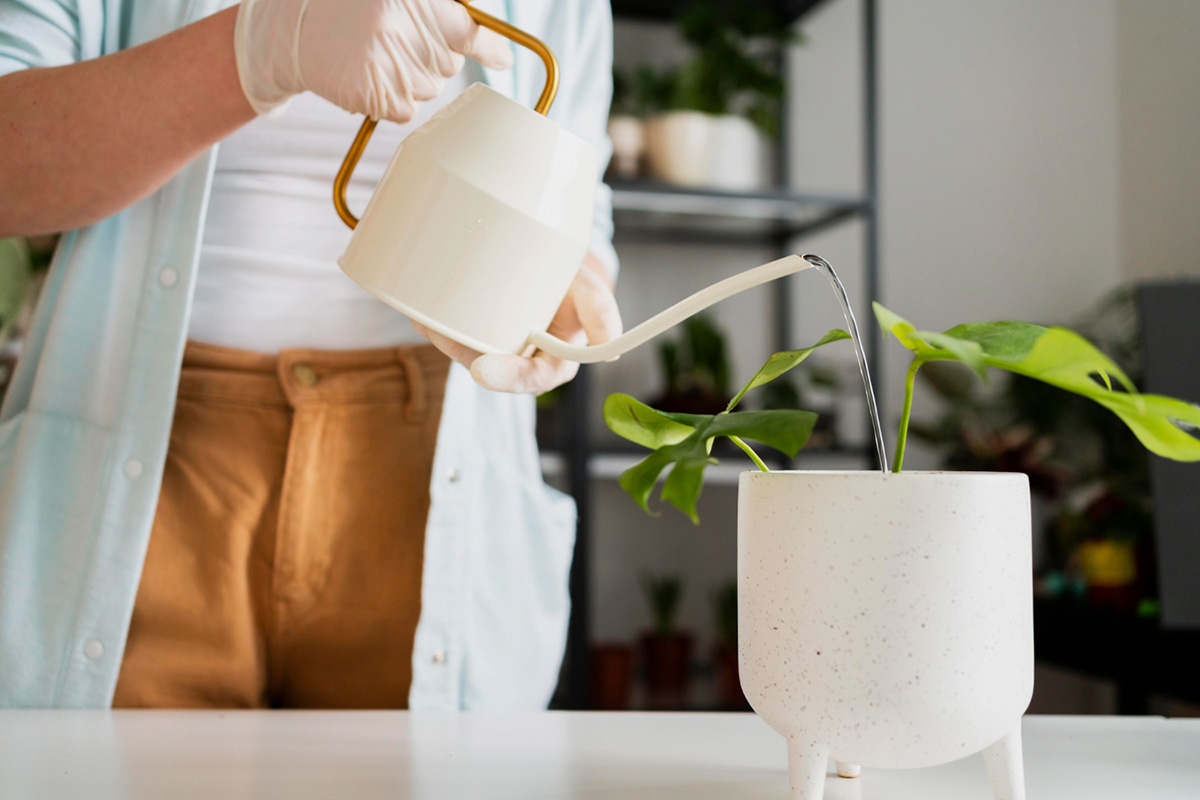

Indoor plants not only add beauty and warmth to our living spaces, but they also have a positive impact on our mental health and well-being. However, proper care and watering of indoor plants can be a daunting task, especially if you're new to plant care. In this blog post, we share some helpful tips on how to care for and water indoor plants to ensure they thrive and look their best.
One of the most common mistakes that plant owners make is overwatering or underwatering their plants. Most indoor plants require watering only when the top 2-3 inches of the soil are dry. Additionally, make sure to use a well-draining soil mix to ensure that your plants won't stay too wet for too long. When watering, saturate the soil until water flows out from the bottom of the pot. Avoid letting your plant sit in standing water, as this can lead to root rot.
Light is essential for photosynthesis, which is the process by which plants make their food. Different indoor plants require different levels of light - some need direct sunlight, while others prefer dappled or indirect sunlight. Make sure to read the care instructions for your plants, and position them in the appropriate spot in your home.
Different indoor plants have different preferences when it comes to temperature and humidity. For most indoor plants, a temperature range of 60°F to 75°F is ideal. Additionally, plants that come from tropical or humid climates, such as ferns or palms, require a higher humidity level than others. You can increase the humidity around your plants by spritzing them with water or using a humidifier.
Indoor plants require regular fertilization to thrive. Water-soluble fertilizers are ideal for indoor plants, and you should apply the fertilizer every 4-6 weeks during the growing season. Additionally, pruning is an essential aspect of plant care. Regular pruning can help keep your plants bushy and prevent them from becoming too leggy.
A plant's pot plays a crucial role in its overall health and well-being. When choosing a pot for your indoor plant, make sure it's the right size - a pot that's too big or too small can cause problems. Additionally, make sure the pot has proper drainage holes, as this allows excess water to drain out of the pot and helps prevent root rot.
Indoor plants are a great addition to any home, but they require proper care and watering to thrive. By following these helpful tips, you can ensure that your indoor plants stay healthy and vibrant. Proper watering frequency and amount, light requirements, temperature and humidity, fertilizing and pruning, and choosing the right pot are all essential aspects of indoor plant care. Remember that caring for indoor plants is a continuous process, and by devoting a little bit of time and effort, you can create a beautiful and healthy indoor garden in your home. So, If you're looking for apartments for rent in Cayce, SC, be sure to contact Otarre Pointe Apartments today to schedule a personal tour.